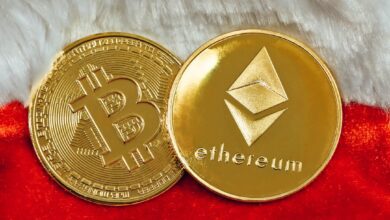Platinum vs. Palladium: Navigating the Investment Landscape for Optimal Returns

In the ever-evolving world of precious metals, platinum and palladium have emerged as two prominent contenders for investors seeking to diversify their portfolios. While both metals share similarities—such as their rarity and industrial applications—their market dynamics and investment potential can differ significantly. This article delves into the intricacies of platinum and palladium, exploring their unique characteristics and historical performance. By examining the fundamental aspects of each metal, analyzing current market trends, and considering key investment factors, we aim to provide a comprehensive overview that will help investors make informed decisions. Whether you're a seasoned investor or just starting to explore the world of precious metals, understanding the nuances of platinum and palladium is essential to navigating potential risks and rewards in today's market. Join us as we embark on a detailed journey to determine which of these two metals might be the better investment for your financial goals.
- “>2. Market Trends and Performance: A Comparative Analysis
- understanding-the-basics:-platinum-and-palladium-explained“>
1. Understanding the Basics: Platinum and Palladium Explained
Platinum and palladium are both precious metals that belong to the platinum group of metals (PGMs), which also includes rhodium, ruthenium, iridium, and osmium. These metals share similar physical and chemical properties, making them valuable in various industrial applications, particularly in the automotive and jewelry sectors. However, they differ in availability, applications, and market dynamics, which can significantly influence their investment potential.
Platinum, denser and rarer than gold, is primarily mined in South Africa and Russia. It has a wide range of uses, including catalytic converters in vehicles, which reduce harmful emissions, as well as in jewelry and electronics. The metal's rarity and its diverse industrial applications often lead to high demand, especially during economic growth phases when automotive production increases.
Palladium, on the other hand, has gained prominence in recent years, especially due to its critical role in catalytic converters for gasoline-powered vehicles. Its primary sources are also South Africa and Russia, but it is more abundant than platinum in the Earth's crust. Palladium's market has been characterized by volatility, driven by shifts in automotive manufacturing trends, particularly as the industry pivots towards cleaner technologies and electric vehicles.
Both metals are typically traded in troy ounces and can be purchased as bullion, coins, or through exchange-traded funds (ETFs). When considering them as investment options, it's crucial to understand their current market conditions, historical price trends, and the broader economic factors influencing supply and demand. The decision between investing in platinum or palladium ultimately hinges on individual investment goals, risk tolerance, and market outlook.
3. Investment Considerations: Risks, Rewards, and Future Outlook
When considering an investment in platinum or palladium, it's crucial to evaluate the associated risks, potential rewards, and the future outlook for both metals. Each metal has unique characteristics that can impact its investment viability.
Risks: Both platinum and palladium are subject to market volatility, influenced by factors such as industrial demand, geopolitical events, and changes in mining production. Platinum, primarily used in automotive catalytic converters, jewelry, and industrial applications, can be significantly affected by shifts in automotive manufacturing and alternative technologies. Palladium, while also used in catalytic converters, has seen heightened demand due to stricter emissions regulations globally, making it more susceptible to price fluctuations based on regulatory changes. Additionally, both metals can be impacted by economic downturns, as demand in the automotive and industrial sectors typically decreases during such periods.
Rewards: The potential rewards for investing in platinum and palladium are considerable, particularly in a diversified portfolio. Historically, both metals have shown price appreciation during times of economic uncertainty, acting as a hedge against inflation and currency devaluation. Palladium has experienced significant price surges in recent years due to supply shortages and increasing demand, making it an attractive option for investors looking for high returns. Platinum, on the other hand, is often viewed as undervalued compared to its historical price levels, presenting an opportunity for potential appreciation as demand increases and supply constraints arise.
Future Outlook: The future outlook for platinum and palladium will largely depend on technological advancements, changes in automotive production, and global economic conditions. While palladium currently dominates the market due to its superior catalytic properties, there is a growing interest in platinum as auto manufacturers explore alternatives and consider the longevity of their supply chains. Additionally, the increasing trend towards electric vehicles (EVs) could alter the demand landscape for both metals. While palladium may see continued short-term demand, platinum's role in hydrogen fuel cells and other emerging technologies positions it for potential growth in the longer term.
In summary, both platinum and palladium offer unique investment opportunities with distinct risks and rewards. Investors should carefully consider market trends, industrial applications, and economic indicators when deciding which metal aligns best with their investment strategy. Diversification within these precious metals can also provide a buffer against volatility and enhance overall portfolio performance.
In conclusion, both platinum and palladium offer unique investment opportunities, each with its own set of advantages and challenges. As explored in our article, understanding the fundamental properties and market dynamics of these precious metals is crucial for making informed investment decisions. While palladium has recently outperformed platinum in terms of price appreciation, largely driven by its demand in the automotive industry for catalytic converters, the long-term prospects for platinum remain strong, particularly as it finds new applications in green technologies and jewelry.
Investors must weigh various factors, including market volatility, supply constraints, and emerging trends, to determine which metal aligns best with their investment goals and risk tolerance. As we look to the future, both metals are poised to play significant roles in a rapidly evolving economic landscape. Ultimately, whether one chooses to invest in platinum or palladium, a well-researched approach and a clear understanding of the market forces at play will be essential for navigating the complexities of these valuable assets.





